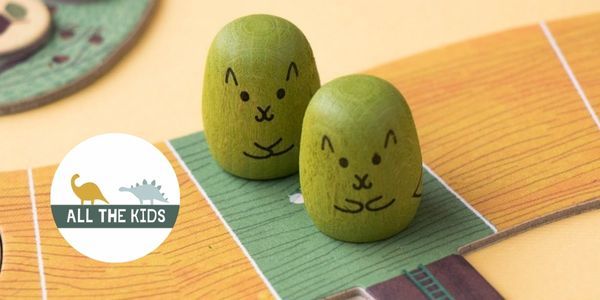

When I was pregnant with my first baby, I admit that I scorned women who didn’t breastfeed their babies. “Why wouldn’t you do the most natural thing in the world and feed your own baby?!” my naive self thought.
When she arrived however, I was in for a shock. Breastfeeding was certainly not the easy, natural, beautiful connection with your baby that I had envisioned. In actual fact it was more akin to a form of torture in the first few weeks.
But how was I to know? With the recent well meant encouragement for women to nurse their newborns, the professionals talking to me about it sugar coated the whole thing and neglected to mention anything at all that may discourage me from using my breasts in the manner they were intended. Don’t get me wrong, I absolutely adore breastfeeding now – my first drank my milk until she was 19 months old, and my little boy is still nursing now at 14 months. But it has been very hard work to reach that point with them both, and even with the passion I have for breastfeeding, I chose to stop feeding my daughter in the end because it simply got too much for me.
So here is my list of 10 things I wish I had known about breastfeeding. Please read them all, and don’t be put off by the not so rosy points! If you can nurse your baby through the hard times, it is completely worth it – there is literally nothing as magical as your baby getting both nutrition and comfort from your body, and knowing that you’re the only person who can provide that particular nourishment for them. But I just want new mothers to know that it is not as easy as everyone makes out, and this list is here to show you that if you are struggling to nurse your child then 1. you are not alone and 2. you are not a failure! Take a look at the list below to get a more well rounded view of breastfeeding – enjoy and don’t give up, you’ve got this!
It Hurts!!!!
Apologies for the drama but by far the most important point I have to make as this is the main reason new mothers give up on nursing. The midwives will tell you that if the latch is correct then it shouldn’t hurt – this is not true!!! It takes time for your breasts to adjust to having a small person attached to it for hours on end; and being a rather sensitive part of a woman’s body then of course it hurts! I’m not talking mild discomfort here, I’m talking full on feeling like someone is trying to slice your nipples off pain. My midwife the first time round was adamant that she must just be latching incorrectly if it hurt, but when I called her over to see she had to admit that her latch was perfect – definitely adjustment pain. Of course there are times when there is something wrong with the latch, or your baby is tongue-tied which impacts feeding. It’s always best to get someone to check in case baby isn’t feeding correctly – remember that they are learning as well as you! I found that Lansinoh HPA Lanolin Nipple Cream 40ml was the only thing that worked for me personally to make my nipples feel better. It’s not just your breasts that hurt either – I had to have an emergency c-section and no one warned me that when you feed your baby it squeezes your uterus, effectively slowly shrinking it back to its usual size. The pain in my womb was therefore severe every time I nursed for a while, as if it wasn’t enough to have been sliced open already! Enough negativity, the plus side? The pain lasts for a few weeks (7 weeks exactly for me), but if you are able to power on through it there will suddenly come a day when you think “There’s no pain…!!!”. And that’s when you can really start enjoying the journey.
Baby will feed constantly…
At least it will feel like it. My daughter used to nurse for 60-90 minutes at a time, mostly whilst she was sleeping. I then got perhaps an hours break before she wanted more. This point definitely depends on the baby though, as I did nothing different with my son and he only fed for 15 mins a time maximum!
Making you feel touched out and exhausted…
It’s OK to admit this. Suddenly you have a small person attached to you for the majority of the day and night, I’d be surprised if you didn’t feel touched out and need your own space sometimes! It’s easier said than done I know, but it’s important to try and get some time to yourself every now and then – even if it’s just 10 minutes to have a shower alone. The tiredness of course will mainly come from the day-to-day needs of a newborn baby, but breastfeeding does drain you even more. Understandable when you think about it – you are literally producing milk for your baby, that’s going to take a lot of energy out of you! The current thinking is that exclusively breastfeeding mothers should have an extra 300-500 calories a day (from healthy snacks preferably, however tempting it is to grab a chocolate bar or two!).
Also making you worry that you aren’t producing enough milk –
I think this is definitely one of the most common questions new breastfeeding mothers ask when their baby feeds for a long time – “how do I know I’m producing enough milk?” I was lucky in that I always produce too much milk that squirts all over the place so no problems there, but if you’re wondering if you are producing enough milk for your baby the main things to look for are: Swallowing whilst nursing, growing well after the initial weight loss most babies have, plenty of wet/dirty nappies. If these are all present then there’s likely no issue with your milk supply. See this link for a great pin about understanding your milk supply. It’s also worth checking baby for signs of dehydration though – if you notice any of these symptoms and are worried then please give your midwife/health visitor a ring who will be happy to help. Dehydration symptoms in newborns – Dry lips, Dry mouth, less than 6 wet nappies in 24hrs, lack of interest in feeding, no tears when baby cries, a sunken rather than flat fontanelle (soft spot on top of babies head)
Prepare!
The amount of time you will spend breastfeeding is hefty. Preparation is key to keeping comfortable! There was many a time when I sat down to feed and then couldn’t move to get a drink or the TV remote for the duration of the feed. The things I would recommend making sure you have in reach whilst feeding are: a drink of some description – nursing makes you thirsty. Something to do i.e. remote for watching TV, a book to read etc. Mobile phone in case someone rings you or you just need it, and something to snack on if you’re likely to get hungry.
Mastitis
No one ever mentioned mastitis to me let alone explained what it was or what the symptoms were. As a result, I spent 3 days in bed when my daughter was 3 weeks old thinking I had the flu and feeling rougher than I’ve ever felt before, without realising that I actually had infective mastitis. It wasn’t until my other half googled my symptoms that we worked out what was wrong with me and how to get me better, so I’m going to explain it for you now. Mastitis is caused by a build up of milk in the breast, characterised by a red area of the breast (often streaked along the duct), hardness of the breast, pain and sometimes discharge from the nipple – see NHS page here: https://www.nhs.uk/conditions/mastitis/ When left this may then turn to infective mastitis where the build up of milk is infected with bacteria. This causes the flu like symptoms of aches, fever, chills and tiredness. If you have infective mastitis you will likely need antibiotics, but if you have caught it before that stage then you basically need to unclog the duct where the build up is. The most effective way of doing this is simply to continue feeding your baby. It is excruciating, but definitely the easiest way of getting the milk to flow again. If like me the pain was too much to feed you could try expressing – see number 9. Standing in a warm shower and massaging the affected milk duct towards the nipple sometimes works too. Take painkillers if need be, and rest as much as possible.
It can create sleep associations…
When my son was first born, he slept fantastically. I would feed him, he’d remove himself from the breast when he’d had enough and I’d lay him in his moses basket where he would sleep for hours. “This is amazing!” I thought, “a baby who sleeps through already, get in!”. However, he got older and more aware of his surroundings and decided he didn’t like going to sleep without me anymore. We are now at 14 months and I’ve managed to create an association between nursing and falling asleep – gaaa!!! He hates going to sleep without nursing now, and he wakes a few times a night every night to nurse. He’s not hungry, he’s just not learnt how to settle himself back to sleep in the night without boob. There are many many articles and books around on how to sleep train your baby, but the main thing I would say is do the reading early on. Hopefully then you can avoid creating the association in the first place if you so wish, rather than trying to break the habit later on.
Making it difficult to stop after a certain point
Connected to the above point, if you have inadvertently created associations with breastfeeding your baby, it can make it very difficult to stop if you decide you want to. My first child nursed all the time and for everything – to sleep, for comfort, for pain relief – everything. Therefore when we got to 19 months and I decided I wanted my body back, the only way I could do it was by staying at my mums for 3 nights while my partner dealt with her. It was heartbreaking for us both, and while it worked (she had basically forgotten about boobs when I came back), it made me feel like the worst mum in the world for taking it away from her altogether just like that. I had previously tried weaning slowly but it just didn’t work for us, the only way for us to stop was to go cold turkey. I’m going to reinforce the point above now… try to avoid creating nursing associations at all so that it is easier to stop as and when you want to. Of course if you’re happy to have associations then go for it!
Expressing
More difficult than it seems. So many ways of doing it, rules of storing milk and what equipment you need can be overwhelming. I personally have used both manual and automatic pumps, as well as hand expressing, and they are all good for different things. Hand expressing is great when you just need to take some milk off and not empty your breasts. See image for how to do this. I have hand expressed when away from baby for a day and become uncomfortably full, and because I wasn’t storing the milk I could just nip into the loos and remove a bit of milk to make myself more comfortable. It was also useful when baby was newborn and my breasts were so full they were too big and hard for her to latch onto properly. I then hand expressed a bit off to make it softer, allowing her to nurse effectively.
A manual pump is handy if you’re going to be out and about without baby and don’t want to/can’t faff about with electricity. For example I went to a festival when my boy was 6 months old and of course had no electric hook up but had to pump milk both for comfort and to keep my supply up. This is where my manual pump came in very handy! The one I used was the Tommee Tippee Manual Breast Pump for this. For more regular expressing, an electric breast pump saves your fingers from cramping up! The Philips Avent Comfort Single Electric Breast Pump, UK 3 Pin Plug is the one I used both times – it was pretty effective at getting milk and I could easily just hold it onto my boob while it did the rest. My biggest expressing tip is to keep trying! It can sometimes take a few minutes for the milk to start flowing – you aren’t necessarily doing something wrong it’s just that baby is far more efficient at stimulating let down than a pump or hand can ever be. This is also why you may not collect as much milk as you expect – what you express is not a good indication of how much milk you are producing. The one product I would definitely recommend is something that I only discovered when I had my second baby – the Hakaa pump. It is not a pump as you would usually think of it, and the concept sounds a bit strange, but when I used it I got an extra 1-3oz milk every single time! It’s basically a silicone device that you stick onto the breast you are not feeding/expressing on and it collects the leaking milk as well as a bit more. I absolutely loved it, no wastage, more golden mummy milk to put in a bottle for daddy to feed – winning! Get yours here: NatureBond Silicone Breastfeeding Manual Breast Pump Milk Saver Suction | BONUS Pump Stopper, Cover Lid, Pouch, Air-Tight Vacuum Sealed in Hardcover Gift Box. BPA Free & 100% Food Grade Silicone/
The pure love and contentment
After all this moaning and negativity about breastfeeding, I wanted to end on a positive note – it may sound like a cliche but there really is nothing like nursing your child. You get snuggles and gorgeous little thank you smiles, a happy feeling from the endorphins, calmness from the oxytocin, and most importantly – you get that amazing bond with your baby that literally no one else has. They have been part of you for 40 weeks, and nursing helps to continue that closeness like nothing else.
Written by Carly Horwood for her blog, Bohemian Rhapso-Mummy.
You can follow her on Facebook, Twitter and Pinterest!



.jpg)

.jpg)
.jpg)

.jpg)

.jpg)




